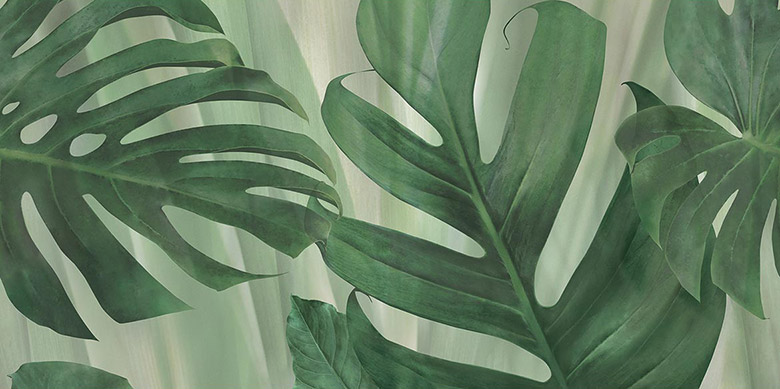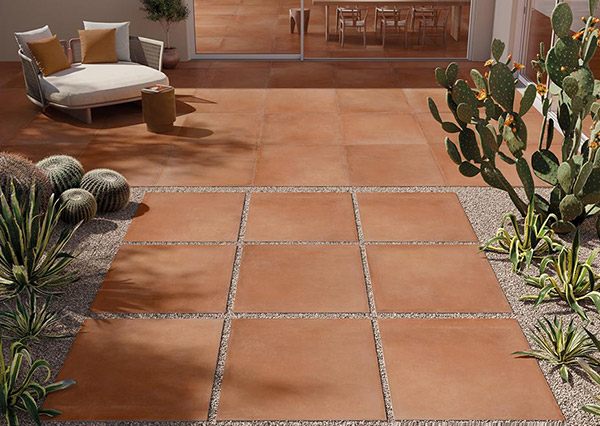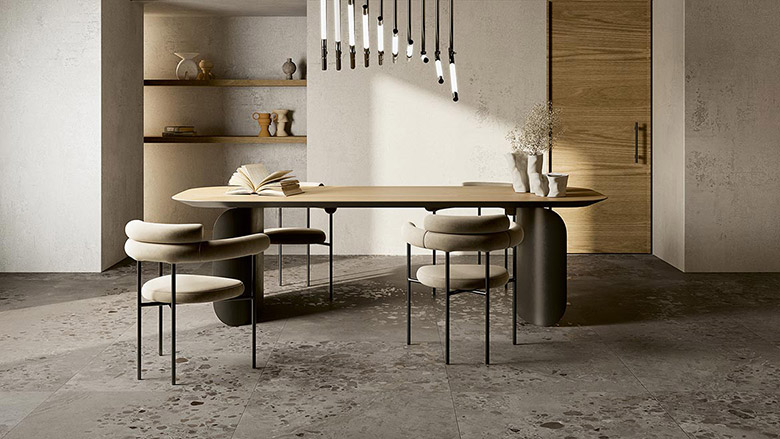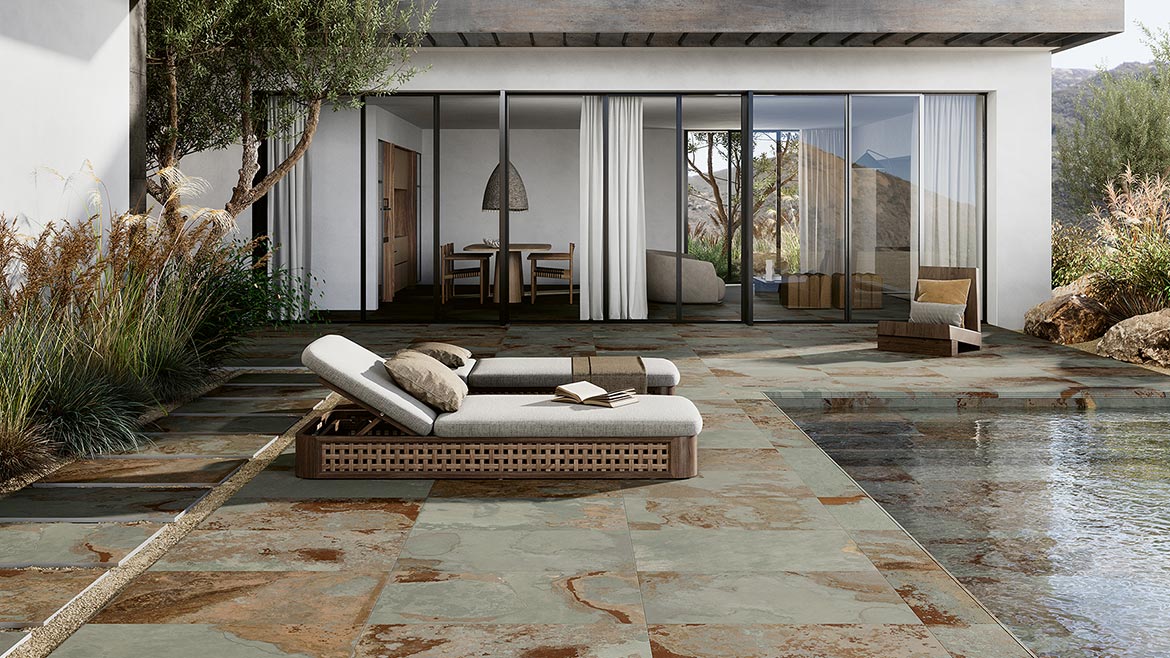Reducing Stress Through Tile’s Biophilic Flooring Designs

Icons is the latest collection from Pastorelli, focusing on decorative biophilic patterns in a 24”x48” format. The collection offers three ceramic prints - ranging in styles from delicate florals to modern, almost pop-art, leaf prints - suitable for both floors and walls, indoors or out.
Photo: Pastorelli.
Designers continue to incorporate elements of nature into their designs to create more natural and healthy spaces.
The concept of biophilia in design emerged in the 1980s, when biologist Edward O. Wilson proposed that humans have an innate affinity for nature and that this connection to nature is essential for our health and well-being. The rise of biophilia in design is a response to the negative effects of urbanization, which have led to people spending more time indoors and disconnected from nature.

“People want to engage with their environment more than we have in the past,” said Feras Irikat, director of design and marketing, Luanda Bay Tile. “It is nature as designer: Biophilic design seeks to connect a home’s occupants more closely to nature by incorporating things like natural lighting and ventilation, natural landscape features and other elements for creating a more productive and healthier built environment for people. People desire natural and organic textures for added interest and design value.”

Tile manufacturers continue to incorporate elements of nature into their designs. The naturally hygienic and easy-to-clean qualities of porcelain tile make it an ideal surfacing choice. Tile boasts a 50+ year lifespan and inherent durability that minimizes the need for frequent repairs and replacement, making it one of the most cost-effective and sustainable material choices available for consumers.
Nature has the power to reduce stress, improve cognitive function, and enhance mood and creativity, which is why many Italian tile manufacturers have been looking to it as a source of inspiration for their collections. Warm, earthy color palettes, biophilic floor decors, and natural material looks — with authentic veins, grooves, and depressions — have reigned supreme amongst Italian manufacturers — and are ideal for designers who are looking to create inviting, cozy spaces within residential and commercial spaces. Many of these collections are also suitable for outdoor use, so designers and home builders can create transitional living spaces that seamlessly blend with adjacent interior settings while being even more connected with nature.

Building on Ceramica Fioranese’s I Cocci series, I Cocci Siciliani is a new interpretation of Sicilian sandstone combined with a trendy pebble effect. The stone-effect tiles are available in a variety of five neutral shades with a scattering of large and small stone fragments, creating a simple yet compelling interpretation of traditional terrazzo. The tile sizes range from 36”x36" to 12”x12", and can be used for a variety of applications including traditional indoor floors, dry-laid walkways, pool decks, patios, and more. Photo: Ceramica Fioranese.

Ceramiche Coem celebrates one of the most beautiful countries in the world with its new collection, Bali. Inspired by Indonesian slate, the porcelain tile collection is available in three sizes up to 24”x36”, three thicknesses, and colorways with chromatic nuances ranging from white to yellow and red to brown. Bali is suitable for indoor and outdoor applications but is especially well-suited for exterior projects. Photo: Ceramiche Coem.
Looking for a reprint of this article?
From high-res PDFs to custom plaques, order your copy today!








